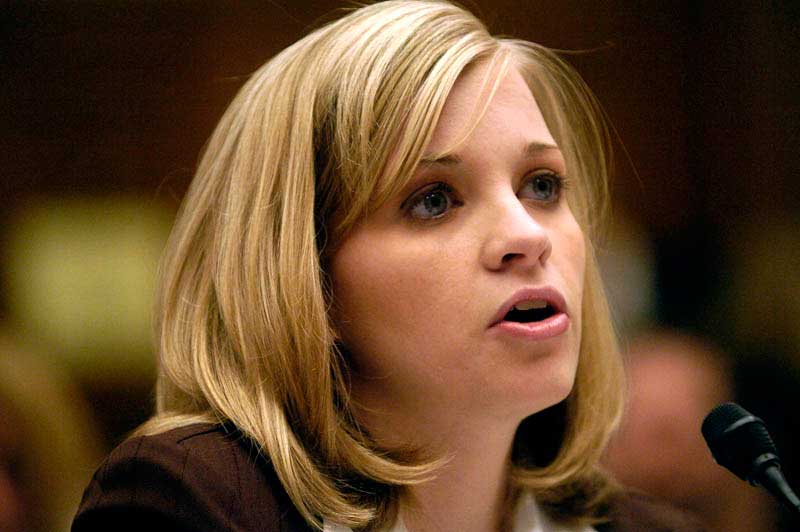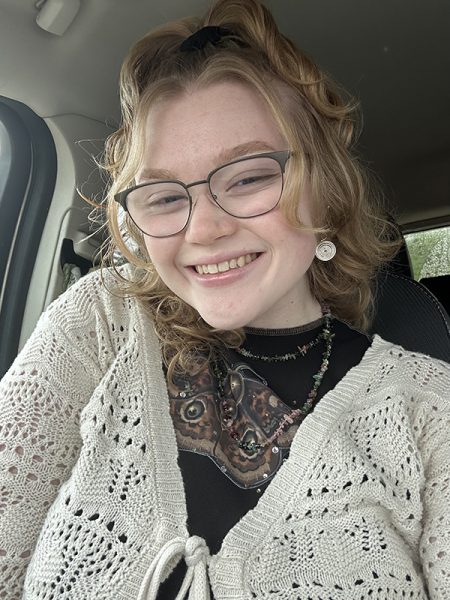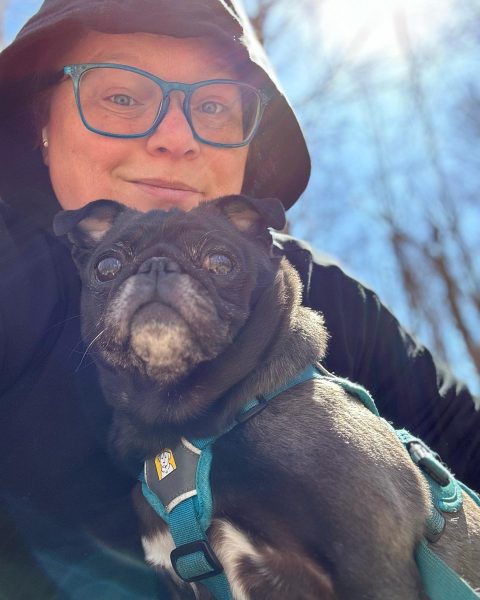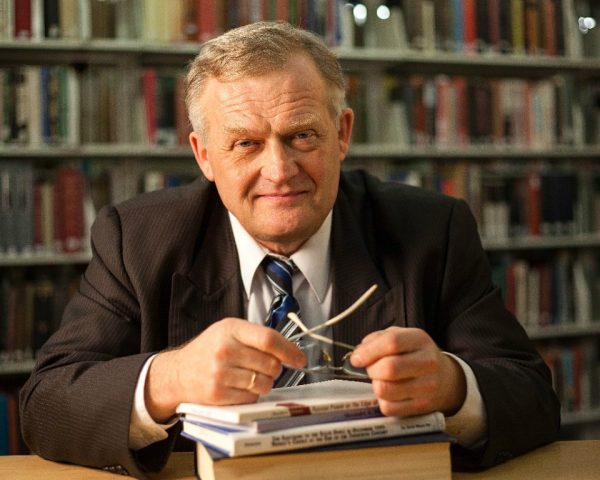PBS special explores the struggle of “Women in War”
Former POW and Pvt. Jessica Lynch
It wasn’t until January 2013 that the U.S. Defense Department renounced the combat exclusion policy that banned women from engaging in ground combat.
Since WWI the U.S. Army has employed women, the Women’s Army Corps (WAC) being the one of the first initiatives to recruit female population. Those who responded to this call were assigned a “professional package” upon their arrival to boot camp, which included instruction on how to apply makeup correctly.
For many years, the females enlisted were assigned only to assistant roles such as nurses and secretaries.
Even when women were shipped to the combat-intense Vietnam War, they were without firearms or firearm training.
Throughout the nation’s wars, the female population proved their pivotal and dedicated role as volunteer enlistees. Fighting against sexual harassment and a “second class citizen” view were only some of the battles they would face in an attempt to overcome gender discrimination in a male dominated Army/Navy world.
PBS is airing their second season of the “Makers” series. Fully titled, “Makers: Women Who Make America,” the series includes episodes that deal with how women have fought against discrimination in various fields, eventually shaping politics, comedy, Hollywood, space, business, and war.
On Tuesday Oct. 21, “Women and War” was screened at JSC.
The hour-long documentary follows female involvement from WWI to post 9/11 conflicts in Afghanistan and Iraq, culminating with the overdue elimination of the combat exclusion policy.
The film highlights instances within the Army/Navy world that created hype and controversy.
In December 1989, 20 thousand US troops invaded Panama, two thousand of these being women in support roles. Captain Linda Bray led a 205-member police unit that she commanded to return fire after being shot at. Those firing would surrender to Bray.
The story was an explosion in the already heated debate of how involved females should be in combat environment. “I was hit with a category five media frenzy,” said Bray, who is noted as the first woman to lead men into combat.
Bray’s actions, and many subsequent instances in the Gulf War proved the reality that women were indeed engaging in combat, on the ground and in the air.
“The only thing that the combat exclusion has done, is it doesn’t keep women out of combat, as we’ve seen down in Panama, it only keeps them from promotions,” said one news anchor, “They want to do this, remember this is a voluntary army, and that they’re capable of doing this, and then we tell them they can’t because of their gender. That doesn’t make any sense.”
In response, a political guest on the news program argues that it is almost repulsive that one would suggest that America, with its democratic values, would ever place females in combat zones and increase their mortal risk.
In the Iraq-Kuwait conflict in the early 90s, women continued to risk their lives for their country; 40,000 women, and nearly 400,000 men were deployed.
Although technically “behind the front lines,” women were exposed to and engrossed in combat. The reality of their ability to fight, and the lack of recognition and allowance to be credited, was a palpable tension in the armed forces.
The front lines had become blurred, and as modern war confirms, will never be easy to distinguish again.
Media coverage showed the nation that women in war were seemingly doing the same things men were, and by the end of the war the competence and strength of women were undeniable.
The Gulf war coverage also highlighted the sexual harassment suffered by Major Rhonda Cornum during her time as a POW.
“Personally, I am not eager to increase exposure of our women to additional risk,” said a suited man in the film. His argument against women on the battlefield was that sexual harassment is an additional risk that could be avoided.
Lieutenant Paula Coughlin was one of many who attended Tailgate, a large Naval convention. She remembers that in 1991 one female naval officer asked when women would be allowed to fly missions and get credit for flying missions. The women was booed and catcalled and laughed at during the open forum.
Coughlin brought to light that sexual harassment was worse within the Army/Navy than anyone knew. When walking to her room, Coughlin was ambushed by groups of men who grabbed her breasts, put their hands up her skirt, and threatened her.
An outcry against the sexual abuse within the Navy caused many to loose their jobs and many to come forth with stories similar to Coughlin’s.
After this battle made headlines, the United States entered into new conflicts after the 9/11 attacks.
These wars proved, as commented by multiple high-ranking officials, that the U.S. Army was a better army with female soldiers.
In these recent conflicts, the media singled out women in war to create untrue portrayals of female fighters.
Jessica Lynch, the first female POW who was rescued, was used to create a new female war image. The news blended heroine and damsel in distress. Lynch resented this treatment.
“The media, all repeating the story of a little-girl Rambo from the hills of West Virginia who went down fighting. It was not true,” said Lynch. “The bottom line is the American people are capable of determining their own heroes and they don’t need to be told elaborate lies.”
Major MJ Hegar, who flew over 100 search and rescue missions in Afghanistan, made the news in 2009 when she suffered injuries in one of her missions. She returned fire without hesitation from her damaged helicopter and from the ground after rescuing injured soldiers.
After telling her story, Hegar said, “I have that warrior spirit, and it came out.”
When people tell me women shouldn’t be in combat because they’ll never be accepted into the band of brothers I think of [my story],” said Hegar. “The fact that I had been a proven combat warrior, someone that can keep their calm while bullets are flying, someone who is a competent person who pulls their weight, I should be afforded the opportunity to use those skills and to fight and defend and protect the things I believe in.”
In 2012 Hegar became the lead plaintiff in the lawsuit that challenged the constitutionality of the combat exclusion policy, stating that women were fighting alongside men, and that the only exclusion was women’s ability to advance in rank for their sacrifices and bravery.
“It’s about the fact I’ve medivaced so many women out of combat zones who aren’t getting credit for fighting in combat,” said Hegar.
The 2013 renouncement of the exclusion policy aligned policy with reality.
The film closes with one women saying, “Women have been involved in war since the beginning of this nation and we’re still trying to get society to just accept that women have the same calling to securing their nation as men. It is no different.”
The final voice is that of Brigadier General Pat Foote, who joined the Army during the days of WAC and WWII. “I have been a very strong advocate of serving and reaching senior positions where they can begin to influence policy of who we go to war against and why we go to war- because no one wants peace more than those who have to fight our country’s wars.”
Travis LeClair joined the Basement Medicine staff in Spring 2014, assuming the position of staff reporter.






